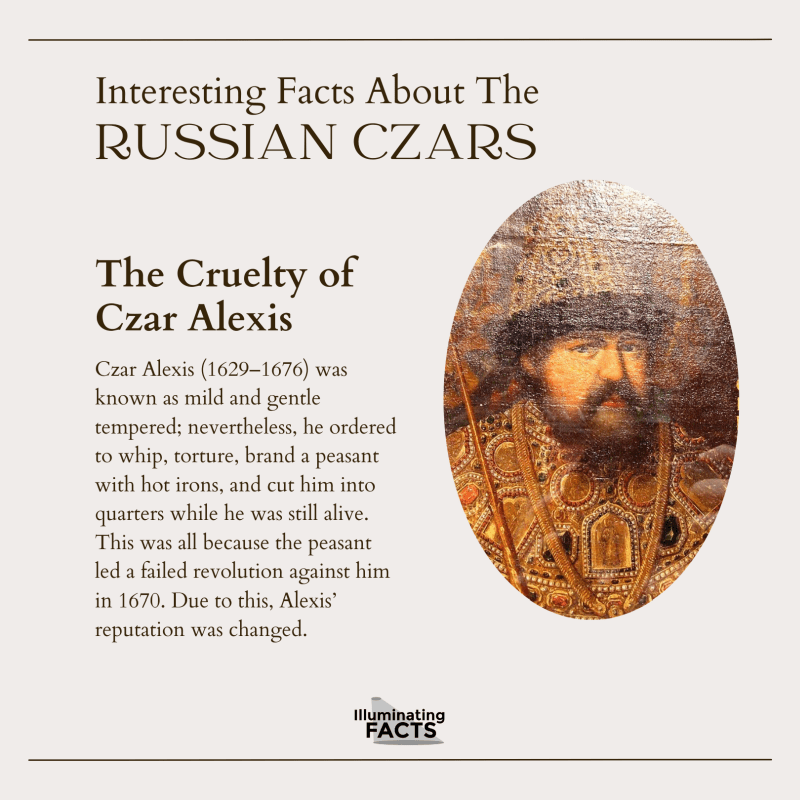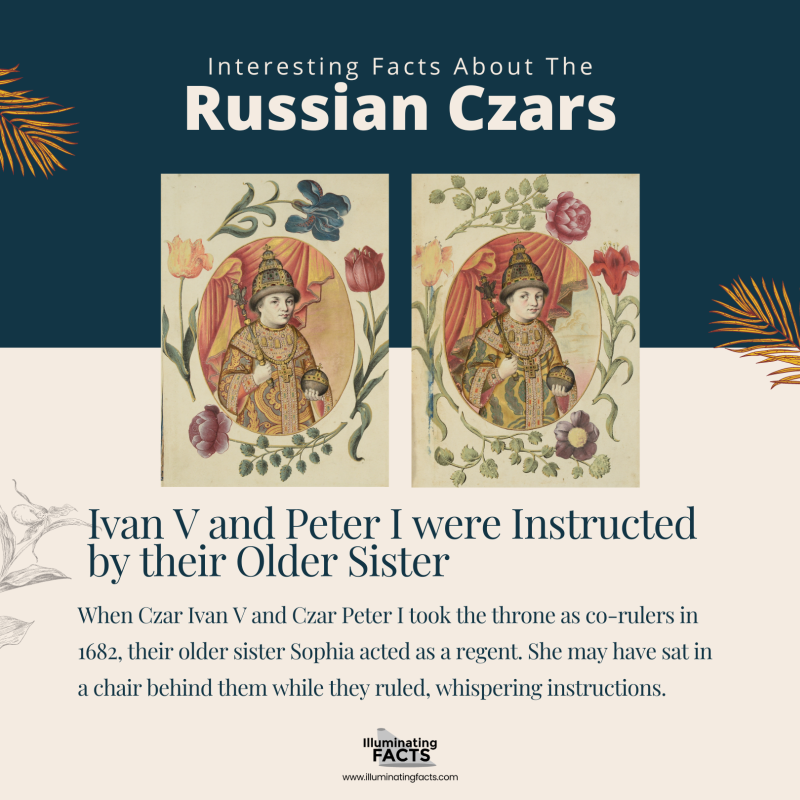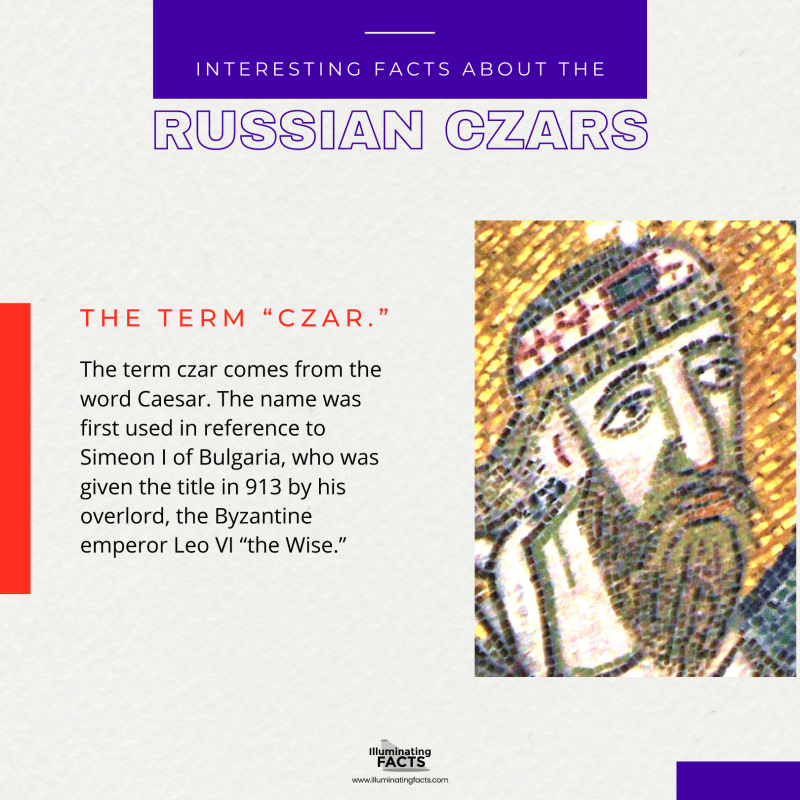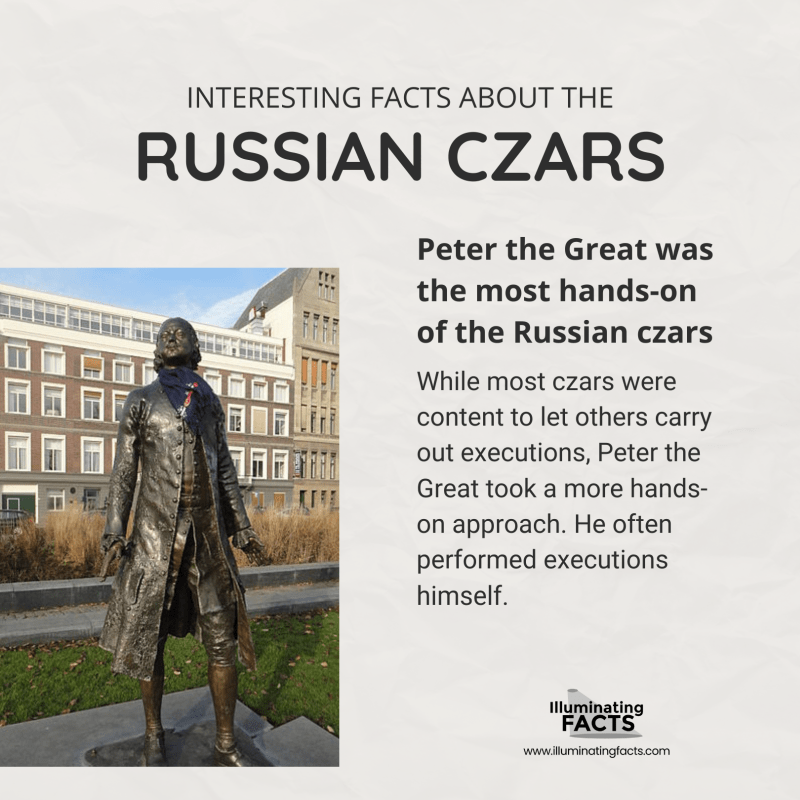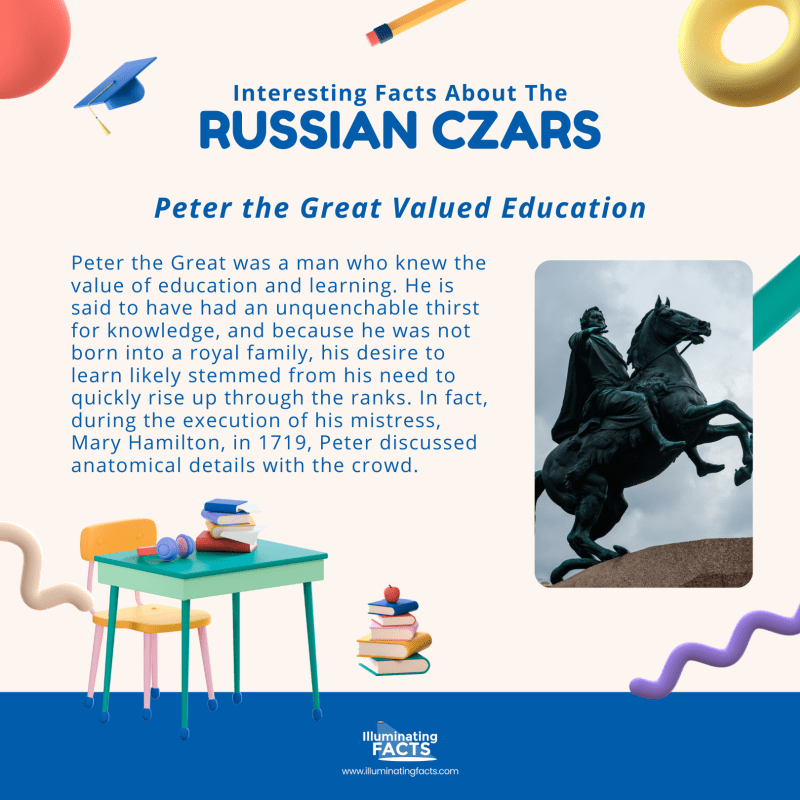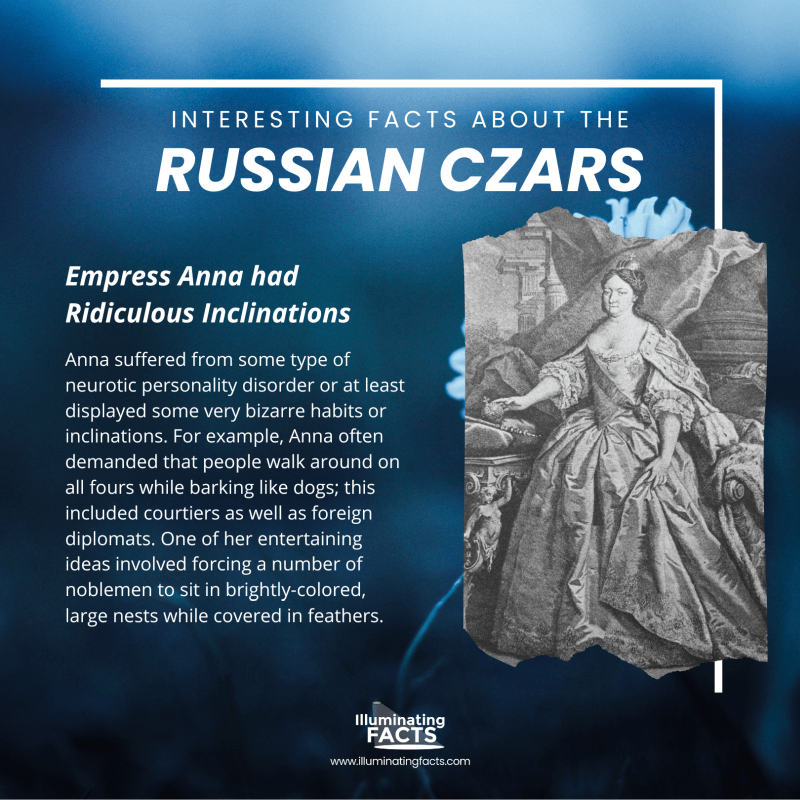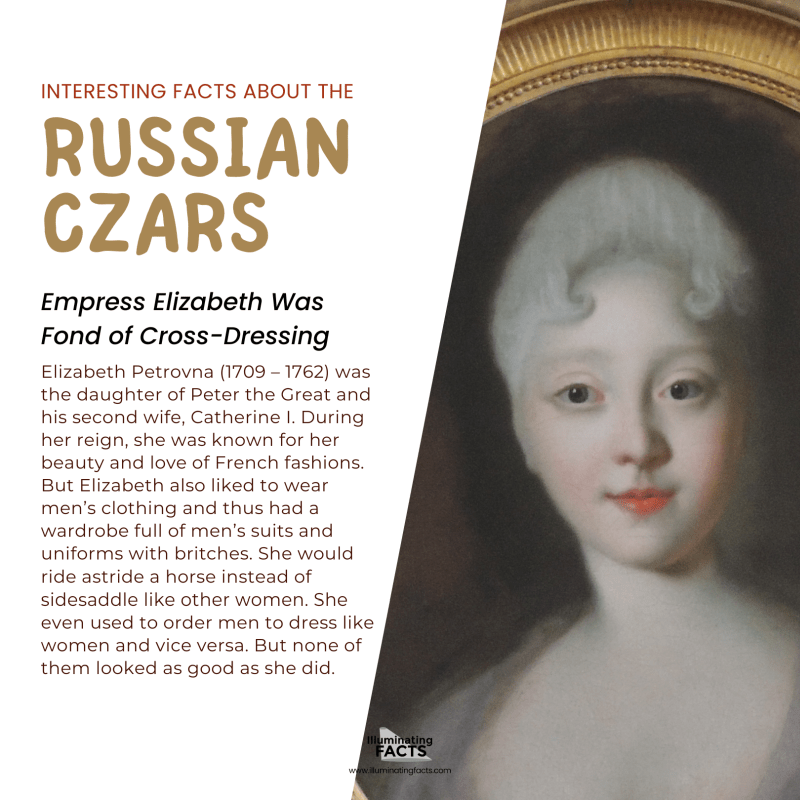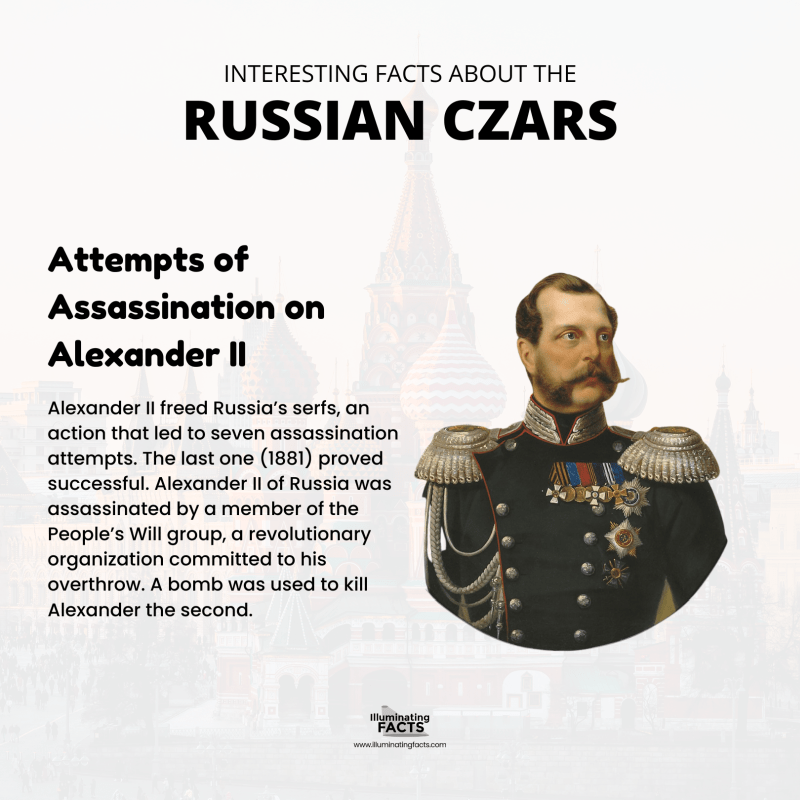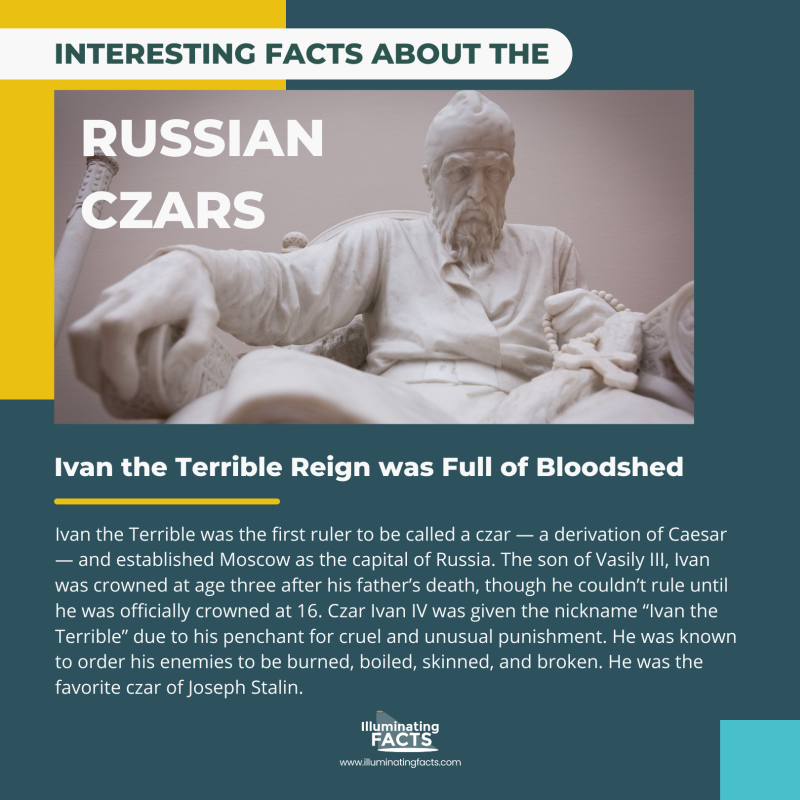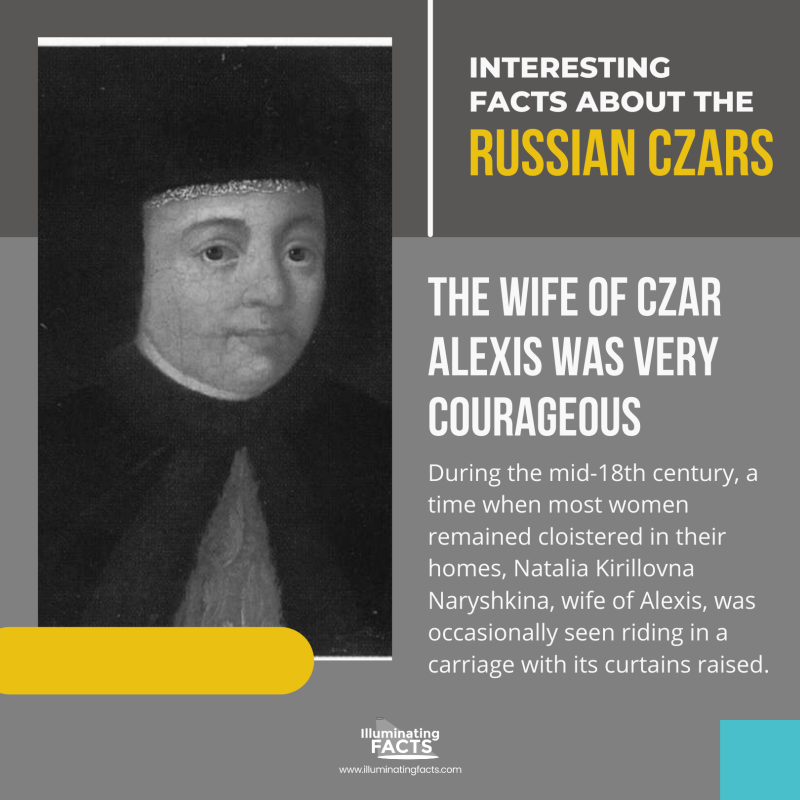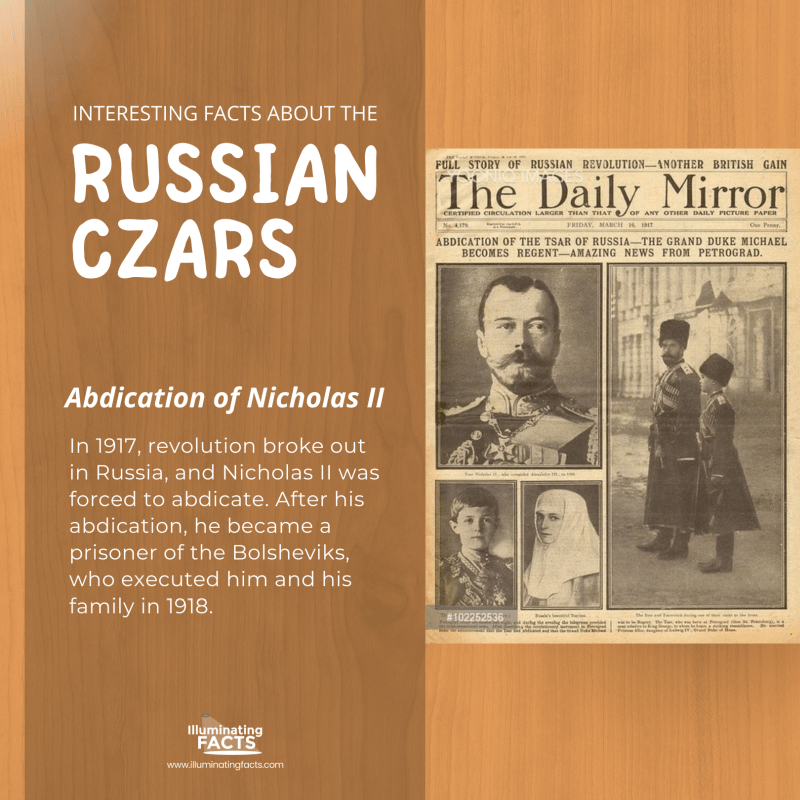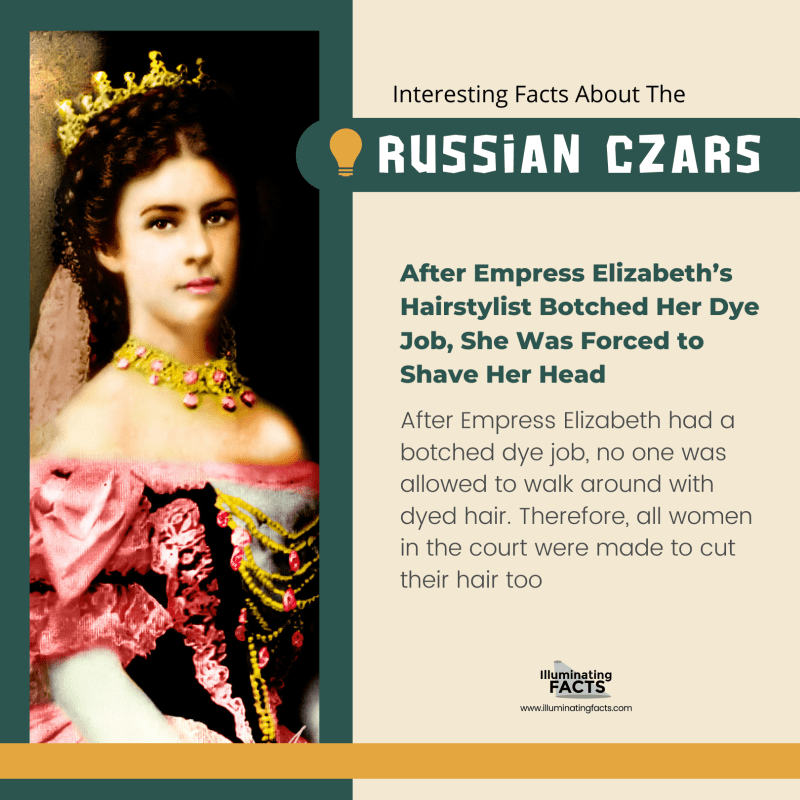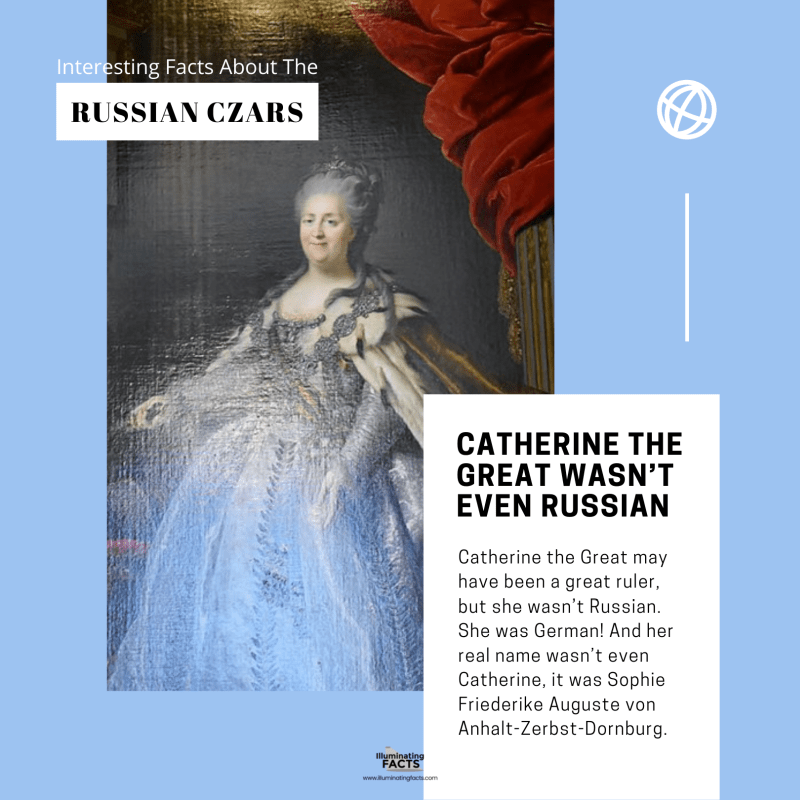Every country has its share of colorful, deeply rooted historical facts that are full of quirky little tidbits as well as oddities we are fascinated by or don’t understand. Sometimes it’s hard to remember that the history we’re taught in school isn’t always accurate. This is especially true for Russia.
The Russian Czars were the absolute rulers of Russia for over 400 years and shaped the country’s fate and its future for that long. When you think about it, it’s really hard to imagine how different life in Russia would be in the past.
1. The Cruelty of Czar Alexis
Czar Alexis (1629–1676) was once known as being a mild and gentle tempered ruler. However, he ordered to whip, torture, and brand a peasant with hot irons and to cut him into quarters while he was still alive. This was all because the peasant led a failed revolution against him in 1670. Due to this, Alexis’ reputation was changed. [1]
2. Ivan V and Peter I were Instructed by their Older Sister
When Czar Ivan V and Czar Peter I took the throne as co-rulers in 1682, their older sister Sophia acted as a regent. She may have sat in a chair behind them while they ruled, whispering instructions.
3. The term “Czar.”
The term czar comes from the word Caesar. The name was first used in reference to Simeon I of Bulgaria, who was given the title in 913 by his overlord, the Byzantine emperor Leo VI “the Wise.” [2]
4. Peter the Great was the most hands-on of the Russian czars
While most czars were content to let others carry out executions, Peter the Great took a more hands-on approach. He often performed executions himself.
5. Peter the Great Valued Education
Peter the Great was a man who knew the value of education and learning. He is said to have had an unquenchable thirst for knowledge, and because he was not born into a royal family, his desire to learn likely stemmed from his need to quickly rise up through the ranks.
In fact, during the execution of his mistress, Mary Hamilton, in 1719, Peter discussed anatomical details with the crowd. [3]
6. Empress Anna Was Very Fond of Firearms
Anna’s most notorious trait was her passion for weaponry; she kept a large supply of guns, pistols, and rifles in her home at Peterhof Palace. An avid hunter, Anna also enjoyed importing wild animals to hunt in the palace grounds.
Anna kept loaded weapons in all the rooms of her palace so that she could shoot at any animals or birds that caught her fancy. During her reign, she killed thousands of animals and birds. [4]
7. Empress Anna had Ridiculous Inclinations
Anna suffered from some type of neurotic personality disorder or at least displayed some very bizarre habits or inclinations. For example, Anna often demanded that people walk around on all fours while barking like dogs; this included courtiers as well as foreign diplomats.
One of her entertaining ideas involved forcing a number of noblemen to sit in brightly-colored, large nests while covered in feathers. [5]
8. Empress Elizabeth Was Fond of Cross-Dressing
Elizabeth Petrovna (1709 – 1762) was the daughter of Peter the Great and his second wife, Catherine I. During her reign, she was known for her beauty and love of French fashions. But Elizabeth also liked to wear men’s clothing and thus had a wardrobe full of men’s suits and uniforms with britches. She would ride astride a horse instead of sidesaddle like other women.
She even used to order men to dress like women and vice versa. But none of them looked as good as she did. [6]
9. Attempts of Assassination on Alexander II
Alexander II freed Russia’s serfs, an action that led to seven assassination attempts. The last one (1881) proved successful. Alexander II of Russia was assassinated by a member of the People’s Will group, a revolutionary organization committed to his overthrow. A bomb was used to kill Alexander the second. [7]
10. Although Nicholas II was Crowned Emperor of Russia, He Was Not Ready to Assume the Throne
Nicholas II, who had not been trained to rule and was not inclined toward reform. He was dedicated to autocracy in a time of great need for change and in the end turned out to be a poor leader. Nicholas II tried to maintain czarist absolutism in Russia but was unable to do so because he lacked the strength for such a task.
As he did not have any political experience, his advisors asked him about important matters in the government; he responded by saying, “Ask my mother.” [8]
11. Ivan the Terrible Reign was Full of Bloodshed
Ivan the Terrible was the first ruler to be called a czar — a derivation of Caesar — and established Moscow as the capital of Russia. The son of Vasily III, Ivan was crowned at age three after his father’s death, though he couldn’t rule until he was officially crowned at 16.
Czar Ivan IV was given the nickname “Ivan the Terrible” due to his penchant for cruel and unusual punishment. He was known to order his enemies to be burned, boiled, skinned, and broken. He was the favorite czar of Joseph Stalin.
12. The Wife of Czar Alexis was Very Courageous
During the mid-18th century, a time when most women remained cloistered in their homes, Natalia Kirillovna Naryshkina, wife of Alexis, was occasionally seen riding in a carriage with its curtains raised.
13. Abdication of Nicholas II
In 1917, revolution broke out in Russia, and Nicholas II was forced to abdicate. After his abdication, he became a prisoner of the Bolsheviks, who executed him and his family in 1918. [9]
14. After Empress Elizabeth’s Hairstylist Botched Her Dye Job, She Was Forced to Shave Her Head
After Empress Elizabeth had a botched dye job, no one was allowed to walk around with dyed hair. Therefore, all women in the court were made to cut their hair too. [10]
15. The Russian Revolution of 1917
The Russian Revolution of 1917 caused the fall of the czars and led to communism taking over Russia under Vladimir Ilʹich Lenin. In 1922, the Soviet Union was formed, and all communist nations came under its umbrella. It lasted until 1991, when communism collapsed in Russia due to economic issues. [11]
16. Catherine the Great wasn’t Even Russian
Catherine the Great may have been a great ruler, but she wasn’t Russian. She was German! And her real name wasn’t even Catherine, it was Sophie Friederike Auguste von Anhalt-Zerbst-Dornburg.
At the age of 15, Sophie was invited to Russia by Peter the Great’s daughter, Czarina Elizabeth. Elizabeth had assumed control of the throe but was unmarried and had no children. She had selected her nephew Peter as her heir and was impressed enough by Sophie to make her the future monarch’s bride. Once married, Sophie converted to Orthodox Christianity and took the name of Catherine or Ekatrina. [12]
17. The First Romanov Czar
The first Romanov Czar, Michael Romanov, was the most hated man in Russia when he came to power in 1613. He had to be dragged from his hiding place and forced onto the throne by the Russian people.
18. The Romanov Dynasty Ruled Russia for More Than Three Hundred Years

The dynasty was founded by Michael Romanov in 1613. Peter the Great (1672-1725) was perhaps the most famous of the Romanovs. He reigned from 1682 to 1721 and is credited with moving the capitol of Russia from Moscow to St. Petersburg. This move brought Russia closer to Europe and put an end to a 13-year war with Sweden.
19. The Best Russian Czar
Peter the Great (1682-1725) is considered to be one of the greatest Russian rulers who made significant contributions to Russian history thanks to his reforms aimed at modernizing Russia and bringing it closer to Europe in terms of culture and economy. He founded St Petersburg and made it the capital of Russia (the city was renamed Petrograd during World War I and Leningrad on September 6, 1991).
Conclusion
While it may be difficult to imagine, the Russian Czars ruled for over 400 years. Almost all of the Czars were more than interesting and made a lasting impact on the history of Russia. If you’re a history buff, these facts about the Russian czars might bring up interesting discussions for family or friends.
References
- Czar Alexis: Between Old and New. (n.d.). People.loyno.edu. http://people.loyno.edu/~history/journal/1987-8/botticelli.htm
- Simeon I | tsar of Bulgarian empire | Britannica. (n.d.). Www.britannica.com. Retrieved October 17, 2022, from https://www.britannica.com/biography/Simeon-I
- Cloud, M. (2020, March 9). What Peter the great executed his mistress Mary Hamilton. Law & Crime News. https://www.ilawjournals.com/what-peter-the-great-executed-his-mistress-mary-hamilton/
- Arbeia, R. O. (2014, February 18). Digging the Dust: The Pistol Packin’ Empress. Digging the Dust. http://dustyheaps.blogspot.com/2014/02/the-pistol-packin-empress.html
- 20 Facts About the Russian Tsars. (2014, July 8). Mental Floss. https://www.mentalfloss.com/article/57674/20-facts-about-russian-tsars
- Durn, S. (2021, October 4). The Weekly Cross-Dressing Balls of 18th-Century Russian Royalty. Atlas Obscura. https://www.atlasobscura.com/articles/cross-dressing-russian-metamorphosis-balls
- History.com Editors. (2019, March 12). Czar Alexander II assassinated in St. Petersbug. HISTORY. https://www.history.com/this-day-in-history/czar-alexander-ii-assassinated
- Editors, H. com. (2010, February 9). Czar Nicholas II crowned. HISTORY. https://www.history.com/this-day-in-history/czar-nicholas-ii-crowned
- History.com Editors. (2018, August 21). Czar Nicholas II abdicates. HISTORY. https://www.history.com/this-day-in-history/czar-nicholas-ii-abdicates
- 20 Facts About the Russian Tsars. (2014, July 8). Mental Floss. https://www.mentalfloss.com/article/57674/20-facts-about-russian-tsars
- History.com Editors. (2009, November 24). February Revolution begins, leading to the end of czarist rule in Russia. HISTORY. https://www.history.com/this-day-in-history/february-revolution-begins
- Maranzani, B. (2018, August 23). 8 Things You Didn’t Know About Catherine the Great. HISTORY. https://www.history.com/news/8-things-you-didnt-know-about-catherine-the-great
- A&E Television Networks. (2017, September 21). Romanov family. HISTORY. https://www.history.com/topics/russia/romanov-family



